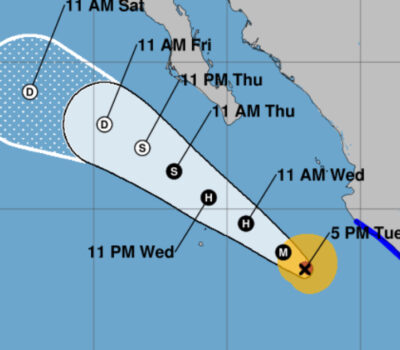Fireworks offer a colorful celebration to the Fiestas Patrias, however they can also give way to accidents with the threat of burns, injuries, amputations or even death, due to their inadequate usage.
From the days leading up to Independence Day in Mexico, it is common to see the sell of rockets known as palomas, abejas, garras, cañones, brujas o chifladores, of national origin, to dragon eggs, camellias and butterflies of Chinese origin. However, Federal Firearms and Explosives Control prohibits the sale of these without proper permission.
Even sparklers, known as luces de bengala in Mexico, can cause injuries that leave reddening of skin, blisters, burning and swelling or wounds of other types.
Although they are a Mexican tradition, the health effects are adverse such as burns that can be serious, hearing injuries, loss of limbs, or in cases less risky eye and respiratory irritation.
The illegal sale of fireworks to anyone, including minors, and the storage of pyrotechnic material pose a threat from potential explosions.
Much of the production of fireworks in Mexico is done by hand, with tools and rudimentary equipment, inheriting from parent to child, for which there are no serial processes, standardization, quality control, or occupational health and safety.
Therefore, the characteristics of the production of pyrotechnic material and the lack of regulation and control of activities in the commercialization and use of pyrotechnics have led to accidents in which explosions predominate, result in injury and death at facilities where they are stored and produced.
There are several types of pyrotechnics such as toys, which use a small amount of gunpowder and are aimed at the general public, and pose no great danger.
In addition, near-audience fireworks, known as “lluvia fría”, do not cause damage and generate little smoke for outdoor fireworks, which are used in large open spaces, usually in large celebrations and must be handled by experts.
The National Center for Disaster Prevention (Cenapred) points out that the Secretariat of National Defense (Sedena) is the only authority that grants authorization to use pyrotechnics, through the General Directorate of the Federal Register of Firearms and Control Explosives.
Cenapred reports that the groups with the highest risk of being affected by the rockets are minors between 5 and 14 years of age, and that in December there is a 300% increase for medical care for burns caused by pyrotechnic games.
The most frequent injuries occur in fingers, eyes, face and head, and the group warns that the pyrotechnic material that should not be purchased are known as white rat, devil faces, R-15 and mule or super cannon.
In order to help reduce risks during pyrotechnic activity management, Cenapred developed the Guide for the Temporary Storage and Use of Pyrotechnic Games in Exteriors, which establishes general safety recommendations for the temporary storage of fireworks and the different types of fireworks or pyrotechnic games.
Cenapred suggests that in case of accidents or burns, if someone’s clothing is caught on fire, they should be covered with a blanket or made to roll on the floor; wash the affected part with cold, clean water; do not apply ointments, creams or other products; cover the wound with cloths or clean towels and go to the nearest medical center.
If any person suffers an eye accident, one should not try to apply first aid themselves, it is necessary to cover the eye with a gauze and to go to receive the attention of a doctor.
For the safe handling of pyrotechnic games, it recommends that minors should not buy or manipulate them, and in case they do not explode they should be soaked with water, it is necessary to light them on the floor; use a support that allows them to exit free and vertical, do not put them in bottles or containers, never store them in the pockets of clothing and avoid storing them at home.
In addition, burn them one by one, do not extract the gunpowder, do not direct them at people, animals or trees and do not put them in your mouth.
It is difficult to eliminate the use of pyrotechnics, but it is important to prevent damage to the health of the population when using it and raise awareness about the risks inherent in the manufacture, use, sale, transport , storage, exhibition and burning of this type of artifacts.
Have a safe and fun Independence Day in Mexico.
¡Viva México!
Related: Celebrating Mexico’s Independence Day in Puerto Vallarta, 5 Things You Might Not Know About Mexico’s Independence Day
Fireworks offer a colorful celebration to the Fiestas Patrias, however they can also give way to accidents with the threat of burns, injuries, amputations or . . .












